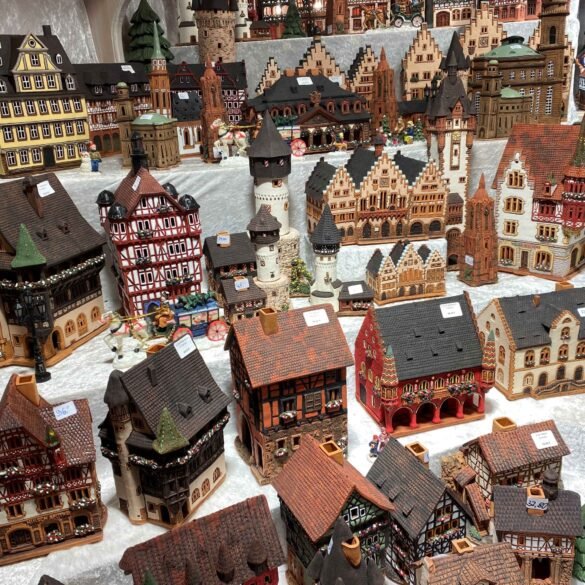The first time I saw a picture of Pamukkale, I had no idea what I was looking at. Was it snow? Super white sand? White marble? Salt deposits? Was this natural or man-made? These questions were not answered until we physically got to Pamukkale, mostly because Victor insisted that I did no further research, so as not to spoil my visit by having seen too many photographs. He kept dropping mysterious clues here and there, something about “Eighth Wonder of The World”, “ancient spa-city”, “no shoes allowed”, and “bring your bathing suit”. When I complained of being confused, he graciously told me that Pamukkale in Turkish means “Cotton Castle,” as if that explained anything at all.
And so, my first glance at the surreal “Cotton Castle” with cascading bright-white terraces filled with turquoise water left me speechless. It was a gorgeous sight from a distance, and the closer we got, the more unrealistic it looked. I would not have been surprised to see this landscape on an alien planet in a blockbuster sci-fi movie, but I could not believe it existed in real life.
As we walked from the parking lot towards the entrance, I learned that the white material I couldn’t identify was actually carbonate mineral left by flowing water, and the terraces were naturally made of calcium stalactites and filled with thermal waters from underground hot springs. This water, packed with minerals such as calcium, magnesium, sulfur, fluorides, and bicarbonates, flows over the terraces and cools, allowing these minerals to solidify and form the landscape's distinctive white travertine terraces.
We paid for the entrance and took off our shoes. I was surprised to see that even employees and security personnel took off their shoes to walk on the terraces, to prevent damage to the delicate floor. I took my first step and could not believe how hard and cold the calcium was. Even up close, it looked like it might have the texture of fluffy sand, rather than firm stone. The floor did have many small loose rocks and sharp edges, so every step had to be taken carefully. We walked over to the first pool, and I flinched at the chilliness of the water. It was looking very unlikely at this point that I would end up using my bathing suit here.
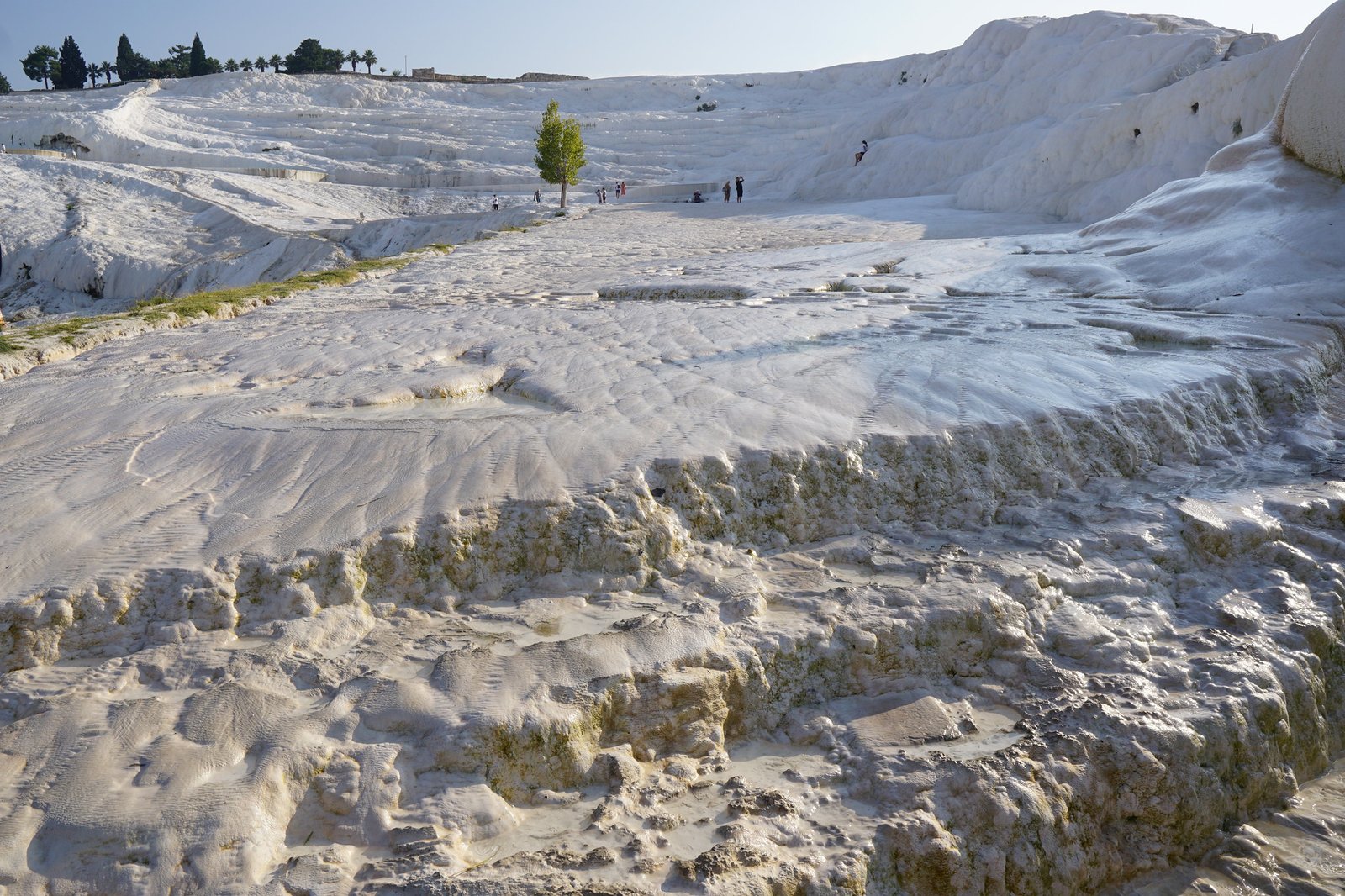
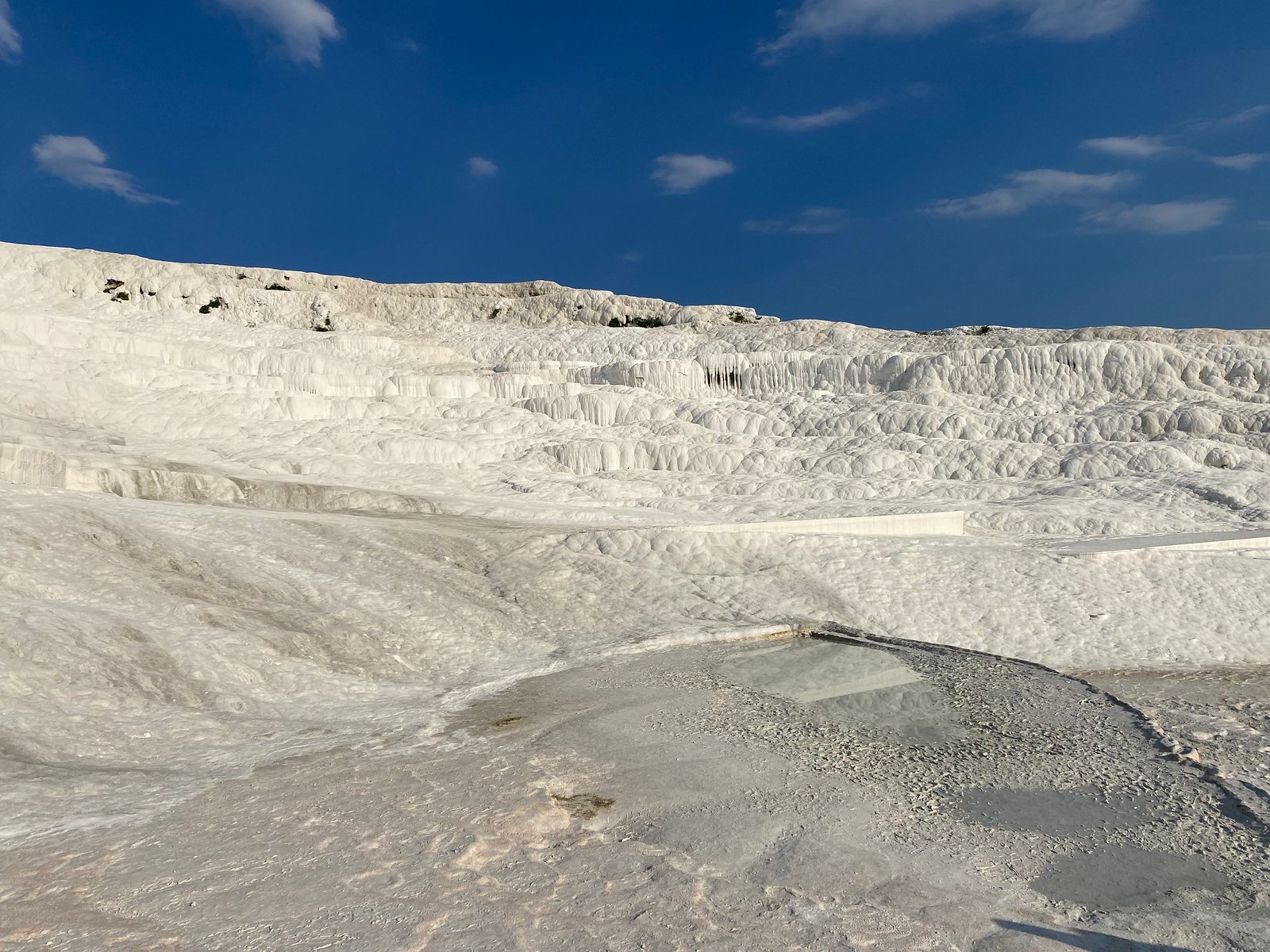

We got there very early, almost at opening time, before the crowds of tourists swarmed every available inch of this place. And so, we were able to explore and take pictures, relatively undisturbed for at least the first hour of our visit. The higher we climbed, the warmer the water in the pools became. The shallow travertine pools were murky, clouded with thick white residue from the bottom, rich in minerals like sulfur and silica. These waters have been touted for their ability to heal pretty much everything - psoriasis, eczema, and dermatitis skin conditions, respiratory and circulatory systems, bone and joint health, and even stress relief. Because of this, Pamukkale has been a flourishing spa resort since ancient times, and even Cleopatra has visited and bathed in these healing pools.
Soon enough, the water was warm enough for me to take a plunge. I stripped to my bathing suit and gingerly lowered myself into the water. At its deepest, the pool was maybe two feet deep, so while I couldn’t swim, I could sit, partly submerged, and ponder what wonders these waters were doing for my health. I didn’t notice any difference in my skin or joint health, but both the view and the water were great for stress relief and relaxation.
Unfortunately, the steadily increasing number of tourists was chipping away at my newly found state of relaxation. This is one of the most visited sights in the entirety of Türkiye, and all of the tourist buses arrive almost at the same time in the early afternoon. Every pool was getting filled to the brim with local families and international Instagram influencers, splashing around and angling for the best-posed picture possible. A photographer with giant, white-feathered wing props was offering an angelic-like photoshoot to every bikini-clad girl in the crowd. By the time we got to the top, I was thrilled that we woke up early to get a few hours of almost one-on-one with this natural wonder.

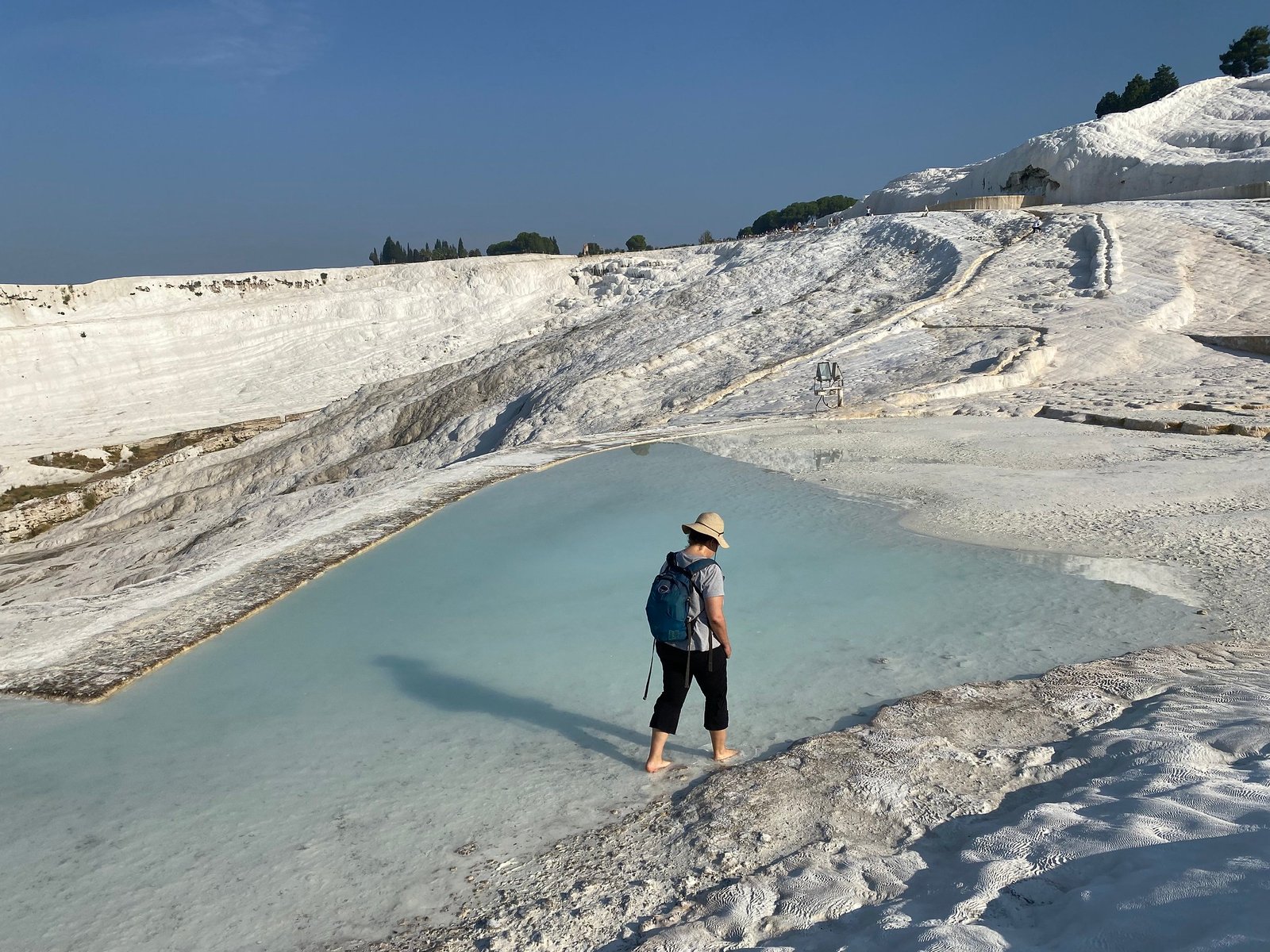
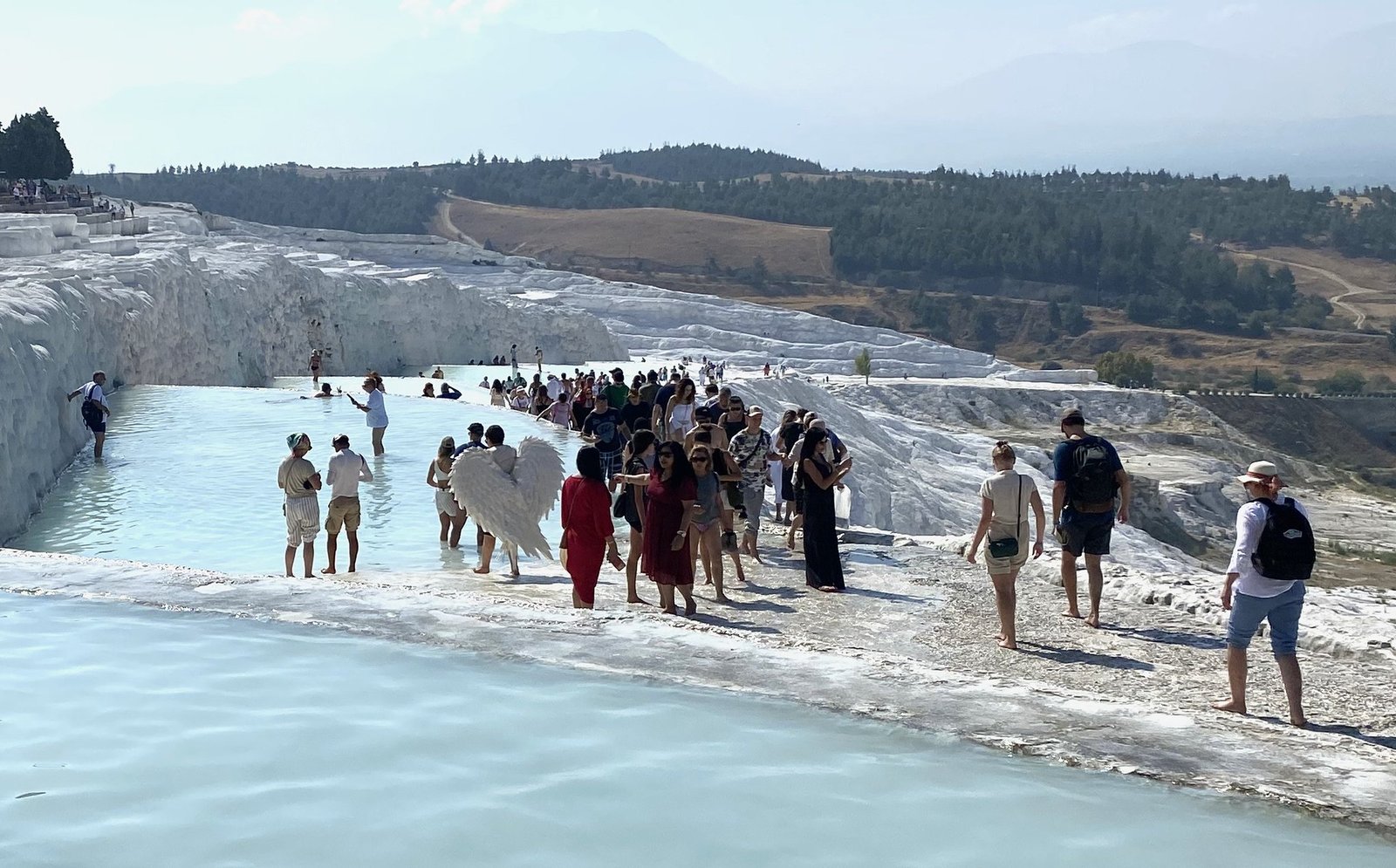
But our visit was not over yet. On top of the hill, there are ruins of Hierapolis, an ancient military post turned spa city. We wandered down a long road, surrounded by towering columns, soaking in the beauty of the ruins. There is a necropolis in the northern part and a Byzantine church at the southern end. But the main attraction lies on the top of the hill, a climb which would have been pretty easy if it wasn’t for the 90+ temperatures we were experiencing in the late afternoon of that early September day. By the time we got there, I was sweating profusely and dreaming of another relaxing soak in the cool waters of the pools below.
But finally, here we were, at the Theater of Hierapolis, overlooking the rest of this ancient Greek colony below. We have seen a lot of Greek theaters by this point, but we were still impressed with this beautifully maintained theater, its steep stone steps, and a well-preserved stage. And just as I was hoping, our next stop was the antique pool near the Temple of Apollo, named Cleopatra’s pool. Unlike the natural travertine pools, this pool was carved into the rock by the Romans and filled with submerged columns and marble pieces of the temple. I opted to pay the 50 Liras to take a dip, while Victor relaxed at the café area. I was surprised to see multiple signs indicating that photography in the pool was not allowed and quickly realized the reason for that when I spotted multiple professional photographers hawking photo sessions right in the pool. Their expensive Canon cameras were not waterproofed in any way, and they all had their equipment raised high above their heads, as they navigated the waters among splashing children and swimming adults.
After a late lunch, the last attraction of the day was a small museum with a fascinating collection of antiquities from Hierapolis, located in a former Roman bathhouse. It was incredible to see the beautiful art, stone reliefs, sculptures, and ancient sarcophagi that were used to decorate Hierapolis. I kept trying to imagine what the city looked like back in its glory days. The best time to visit Hierapolis was probably during the time of Cleopatra, but the second-best time was early enough in the morning to beat all the tourist buses.


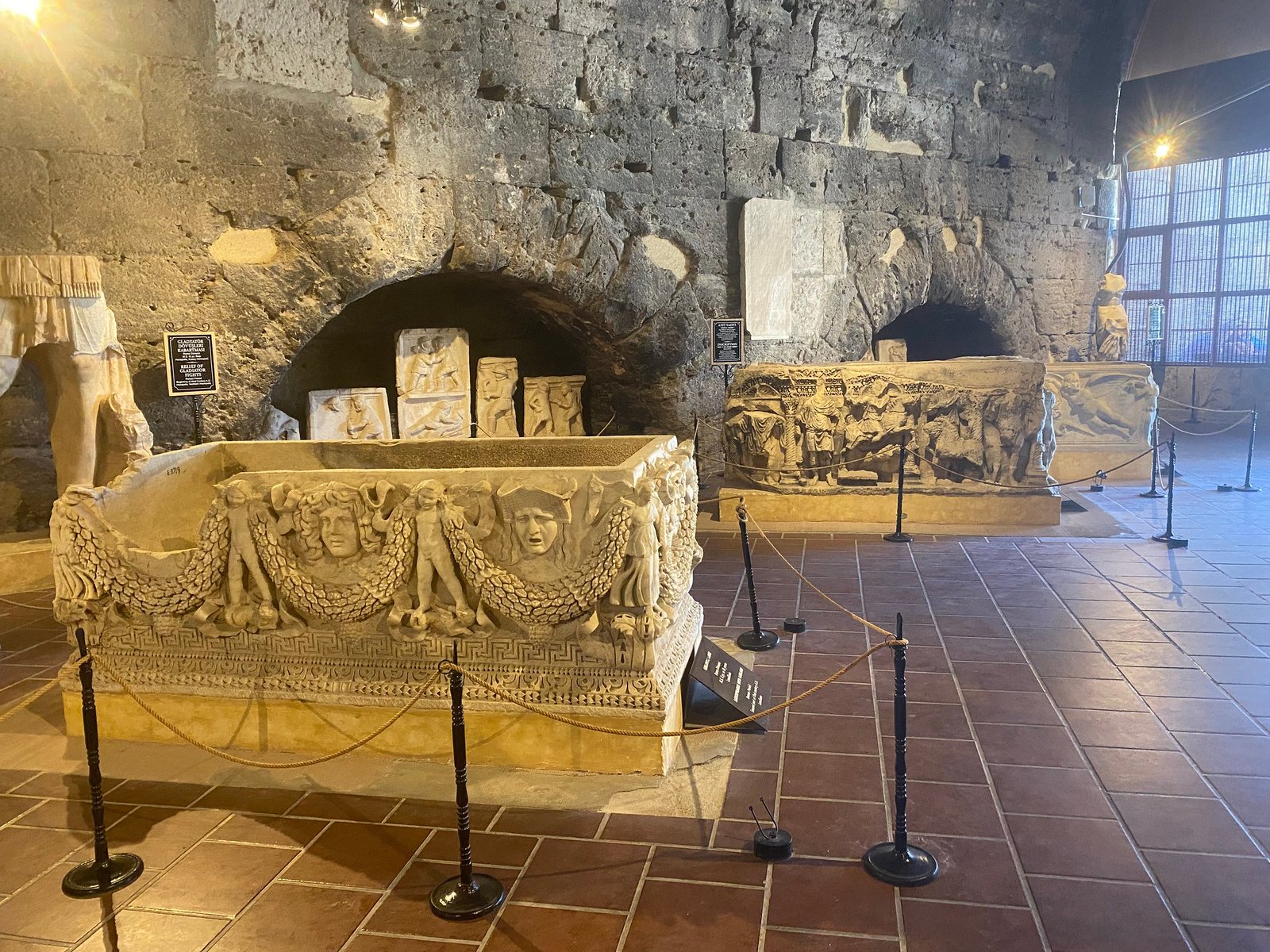
This is our last post of the year, so Happy Holidays to everyone! See you all in 2024!


